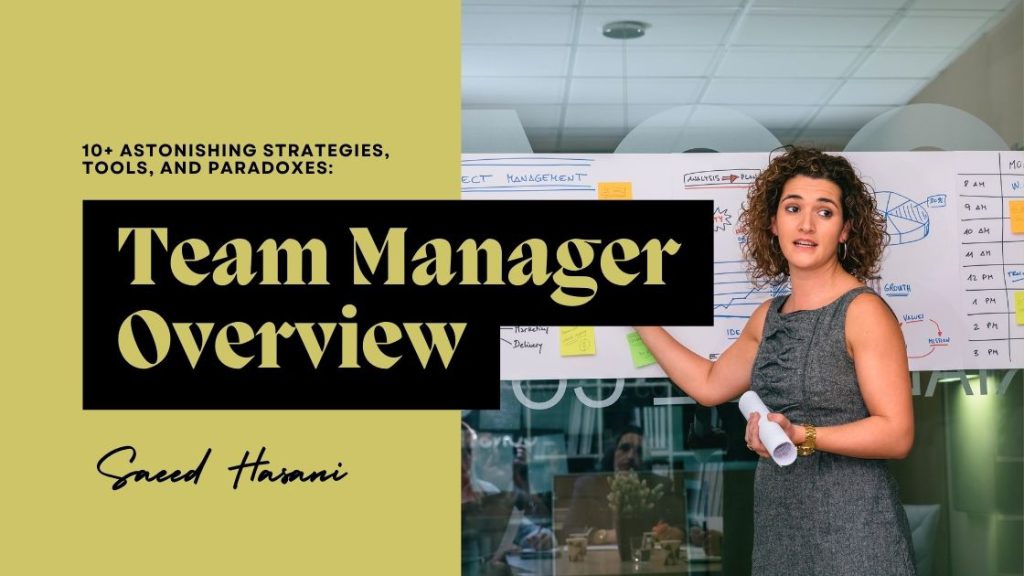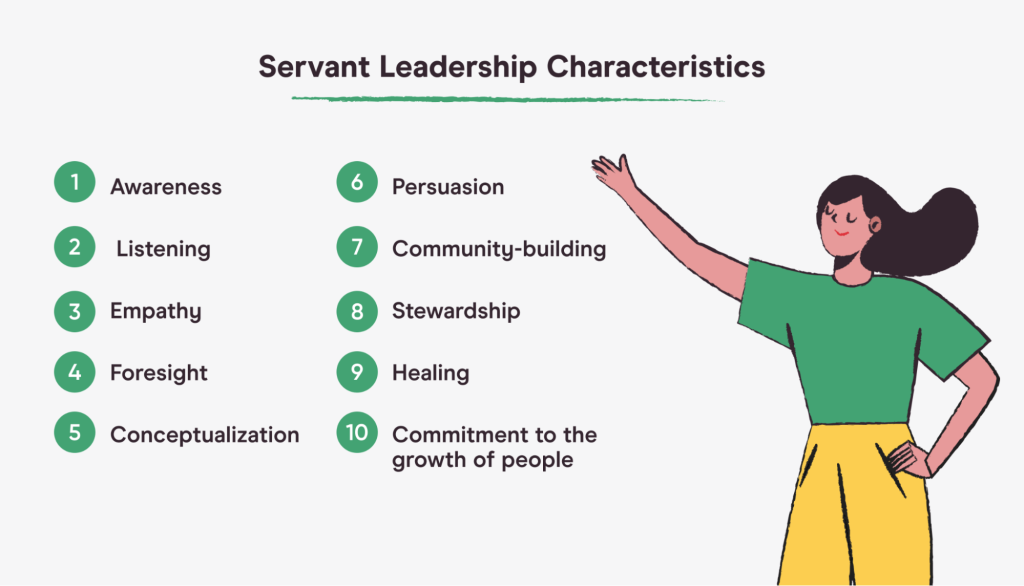Team manager overview: 10+ astonishing strategies, tools, and paradoxes!

Are you ready to elevate your skills as a team manager? Dive into our comprehensive guide! Discover over ten revolutionary strategies, tools, and intriguing paradoxes in team management.
Equip yourself with the knowledge to empower your team, optimize resources, and master the art of leadership. Uncover the secrets to becoming an exemplary team manager and transforming your team into a powerhouse of success here:
Content Overview:
Team manager responsibilities: What is a team manager?
A team manager plays a crucial role in organizing, managing, and leading a team, whether in sports, business, or any other field. Their responsibilities vary widely depending on the context but generally include the following:
- Leadership and Direction: Providing leadership and direction to team members, setting clear objectives and goals, and ensuring all team members are aligned with these goals.
- Communication: Acting as a bridge between the team and senior management (in a corporate setting) or between the team and external stakeholders (such as sponsors and fans in sports). They ensure that communication is clear, effective, and open, both within the team and with external parties.
- Resource Management: Managing the resources needed by the team, which could include equipment, finances, and human resources. This involves budgeting, procurement, and allocation of resources in a manner that maximizes efficiency and performance.
- Scheduling and Planning: Organizing schedules, including training, meetings, and events, ensuring that all logistical aspects are handled efficiently. This also includes planning for the short-term tasks and long-term goals of the team.
- Performance Management: Monitoring the performance of team members, providing feedback, and implementing strategies to improve individual and team performance. This could also involve disciplinary actions if necessary.
- Problem-Solving: Addressing and resolving any issues or conflicts within the team, ensuring a harmonious and productive working environment.
- Development and Training: Identifying training needs and opportunities for team development, organizing training sessions, and ensuring team members grow in their roles and contribute effectively to the team’s goals.
- Recruitment and Selection: In some cases, especially in sports and certain corporate settings, team managers may be involved in the recruitment and selection of new team members.
The role of a team manager is multifaceted and demands a blend of interpersonal, organizational, and strategic skills. The ultimate goal is to create a cohesive, efficient, and successful team that meets its objectives and goals.

What does a team manager do?
A team manager undertakes a variety of tasks and responsibilities that are essential for the functioning and success of a team. These responsibilities can vary significantly depending on the industry, the size of the team, and the organizational structure. However, some core duties are common across most contexts:
- Leadership: Provides direction and motivation to team members, setting clear objectives and ensuring that everyone is working towards common goals.
- Communication: Acts as the primary point of communication between the team and upper management, other departments, or external stakeholders. They ensure that information is accurately and promptly shared within the team and with relevant parties outside the team.
- Resource Management: Manages the team’s resources, including budgeting, allocating equipment, and ensuring that the team has everything it needs to work efficiently and effectively.
- Scheduling and Planning: Organizes the team’s schedule, including meetings, work shifts, deadlines, and project timelines, ensuring that resources are optimally allocated and deadlines are met.
- Performance Monitoring and Management: Keeps track of team performance against objectives and targets. They provide feedback, address performance issues, and implement strategies to improve productivity and efficiency.
- Problem-Solving and Conflict Resolution: Identifies and resolves issues within the team, whether they are interpersonal conflicts, technical problems, or resource-related issues, ensuring a harmonious and productive work environment.
- Training and Development: Identifies the training and development needs of team members, organizing training sessions or facilitating professional development opportunities to enhance skills and competencies within the team.
- Recruitment and Onboarding: In some cases, especially when the team is growing or there’s turnover, the team manager will be involved in recruiting new members, conducting interviews, and overseeing the onboarding process to integrate new hires into the team.
- Strategy and Goal Setting: Collaborates with senior management or stakeholders to set strategic goals for the team, developing plans and strategies to achieve these goals.
- Reporting and Analysis: Prepares reports on team performance, progress towards goals, and any challenges faced, analyzing data to inform decision-making and strategy adjustments.
The role of a team manager is dynamic and requires a mix of strategic thinking, operational management, and interpersonal skills to support the team’s success and contribute to the organization’s objectives.
Why should the Team managers act on the Servant Leadership style?
Adopting a servant leadership style can be highly beneficial for team managers for several reasons.
Servant leadership emphasizes the importance of leading by example, putting the needs of employees first, and helping people develop and perform as highly as possible.
Here are several key reasons why team managers should consider acting on the servant leadership style:
- Enhances Team Performance: By prioritizing the growth and well-being of team members, servant leaders can create a more motivated, engaged, and productive team. Employees who feel supported and valued are more likely to contribute their best work.
- Builds a Strong Team Culture: Servant leadership fosters a culture of trust, respect, and collaboration. When team members see their manager working alongside them, prioritizing their needs, and actively contributing to their development, it strengthens the team’s cohesion and commitment to shared goals.
- Improves Employee Satisfaction and Retention: Managers who practice servant leadership contribute to higher levels of employee satisfaction by creating a supportive and empowering work environment. This, in turn, can lead to lower turnover rates, as employees feel more connected to their team and less inclined to seek opportunities elsewhere.
- Encourages Innovation and Creativity: Servant leaders create a safe space for team members to express their ideas and take risks. By encouraging innovation and not fearing failure, these leaders can drive their teams to find creative solutions and improve processes, products, or services.
- Develops Future Leaders: By focusing on the personal and professional development of team members, servant leaders help cultivate the next generation of leaders. This approach ensures that the organization has a pipeline of skilled and experienced individuals ready to take on leadership roles.
- Enhances Adaptability: Teams led by servant leaders are often more adaptable and resilient in the face of change. Because these leaders focus on developing a strong, supportive team environment, their teams are better equipped to handle challenges and pivot when necessary.
- Increases Customer Satisfaction: The positive effects of servant leadership extend beyond the team and can impact the organization’s customers or clients. When employees are engaged and empowered, they are more likely to provide exceptional service, leading to higher levels of customer satisfaction and loyalty.
- Supports Ethical Behavior: Servant leadership is rooted in ethical principles and a commitment to doing what is right for the team and the organization. By modeling ethical behavior, servant leaders encourage their teams to uphold high standards of integrity and accountability.
In summary, the servant leadership style aligns with the idea that the most effective leaders are those who prioritize the needs of their team, support their development and lead by example. This approach not only benefits the individuals within the team but also contributes to the overall success and competitiveness of the organization.

3 strategies to manage project team effectively
Effectively managing a project team requires a combination of strategic planning, interpersonal skills, and a focus on results. Here are three strategies that can help managers lead their project teams to success:
1. Clear Communication and Goal Setting
- Establish Clear Objectives: Start by defining clear, achievable goals for the project. Ensure that every team member understands not only what is expected of them but also how their work contributes to the wider project objectives.
- Regular Updates and Check-ins: Implement a system for regular communication, such as daily stand-ups, weekly meetings, or project updates. This keeps everyone informed, allows for the early identification of issues, and keeps the team aligned on progress and changes.
- Open Feedback Channels: Encourage open communication by establishing feedback channels where team members can share their thoughts, suggestions, and concerns. This can be through one-on-one meetings, suggestion boxes, or anonymous surveys.
2. Empowerment and Resource Allocation
- Delegate Effectively: Identify the strengths and weaknesses of team members and delegate tasks accordingly. Empowering team members with tasks that align with their skills and interests can increase engagement and productivity.
- Provide Necessary Resources: Ensure the team has access to the tools, information, and resources they need to complete their tasks efficiently. This could involve software tools, access to training, or additional support from other departments.
- Encourage Autonomy: While providing guidance and support, allow team members some autonomy in how they complete their tasks. This can foster innovation and improve morale, as team members feel trusted and valued.
3. Build a Supportive Team Culture
- Promote Team Collaboration: Encourage a culture of collaboration and mutual support among team members. This can be facilitated through team-building activities, collaborative work sessions, and recognizing and rewarding collaborative efforts.
- Address Conflicts Promptly: Conflict is inevitable in team settings. Approach conflicts as opportunities for growth, addressing them promptly and constructively, ensuring a fair resolution that maintains team harmony.
- Foster Professional Growth: Invest in the professional development of team members. This can be through mentoring, training, or providing opportunities for team members to take on new challenges within the project. Supporting their growth contributes to their motivation and the overall skill set of the team.
Implementing these strategies requires a nuanced understanding of the team’s dynamics, the project’s requirements, and the organizational culture.
A successful project manager not only manages the project’s scope, timeline, and budget but also leads the team in a way that leverages their strengths, supports their development, and drives them toward achieving common goals.
What is distributed team management?
Distributed team management involves overseeing and coordinating teams that are geographically dispersed, often across different cities, countries, or continents.
This approach to team management has become increasingly common due to advances in technology that facilitate remote work, global operations, and flexible work arrangements.
Managing distributed teams presents unique challenges and opportunities compared to traditional, co-located teams. Here are key aspects of distributed team management:
Key Characteristics
- Geographical Dispersion: Team members work in different locations, which can range from different offices within the same city to entirely different countries or continents.
- Reliance on Technology: Effective communication and collaboration depend heavily on technology, including video conferencing tools, instant messaging platforms, project management software, and cloud-based document sharing.
- Flexible Work Hours: Given the different time zones team members may be in, work hours can vary significantly across the team, requiring flexibility in scheduling meetings and collaborative work sessions.
Challenges
- Communication Barriers: Time zone differences and lack of face-to-face interaction can lead to communication challenges, making it harder to convey nuances and resolve misunderstandings.
- Building Trust and Team Cohesion: Without the natural interactions that occur in a co-located setting, fostering a sense of trust and team spirit requires deliberate effort and strategies.
- Project Coordination: Ensuring that all team members are aligned on project goals, deadlines, and responsibilities can be more complex when team members are not physically together.
Strategies for Effective Management
- Regular Check-ins and Communication: Establishing regular meetings and check-ins helps maintain open lines of communication, align goals, and monitor progress.
- Use of Collaboration Tools: Leveraging technology effectively—such as project management software, shared digital workspaces, and communication platforms—is crucial for coordinating tasks and facilitating collaboration.
- Cultural Sensitivity: Being aware of and respectful of the cultural differences within a distributed team can improve interpersonal relationships and team dynamics.
- Clear Expectations and Processes: Setting clear expectations for work hours, availability, communication norms, and project deliverables is vital to ensure smooth operations.
- Focus on Results: Shifting the focus from hours worked to outcomes achieved can be particularly effective in distributed teams, promoting efficiency and accountability.
Managing distributed teams effectively requires a blend of strong communication skills, cultural sensitivity, technological proficiency, and a focus on results-oriented management.
By adopting strategies tailored to the unique challenges of distributed teams, managers can foster a productive, engaged, and cohesive team environment, even when team members are spread across the globe.

7 project management tools for remote teams
For remote teams, leveraging the right project management tools is crucial to maintain productivity, communication, and collaboration. Here are seven widely used project management tools that cater to various needs of remote teams:
1. Asana
- Features: Task assignments, project timelines, workspaces for collaboration, and integration with various tools like Slack, Google Drive, and Dropbox.
- Best For Teams looking for a flexible tool to manage tasks, projects, and communications in a highly visual and customizable interface.
2. Trello
- Features: Kanban-style boards, lists, and cards for task management, along with power-ups for adding extra features and integrations with apps like Slack, Google Drive, and Evernote.
- Best For Teams that prefer a simple, intuitive interface for managing tasks and workflows visually.
3. Slack
- Features: Instant messaging, voice and video calls, file sharing, and integration with many project management tools and apps.
- Best For Teams seeking a central communication platform that can also integrate with other tools for a seamless workflow.
4. Zoom
- Features: Video conferencing, webinars, screen sharing, and real-time messaging.
- Best For Teams that rely on face-to-face communication for meetings, brainstorming sessions, and presentations.
5. Jira
- Features: Agile project management tools, customizable Scrum and Kanban boards, roadmaps, and detailed reporting. It’s highly favored for software development projects.
- Best For Teams, especially in software development, that require detailed project tracking, issue tracking, and agile methodology support.
6. Microsoft Teams
- Features: Chat, video meetings, file storage, and integration with Office 365 applications and other Microsoft services.
- Best For organizations already using Microsoft products, and looking for a comprehensive collaboration and communication solution.
7. Basecamp
- Features: To-do lists, milestone management, file sharing, message boards, and a centralized schedule.
- Best For Teams looking for an all-in-one project management and communication tool with a straightforward interface.
Each of these tools offers unique features and benefits, making them suitable for different types of projects, team sizes, and organizational needs. The key to effective remote team management is choosing the tool that best aligns with your team’s workflows, communication styles, and project requirements.
When managing teams what is a common paradox?
A common paradox in team management is the need to balance control with autonomy.
This paradox arises from the conflicting requirements of providing enough direction and oversight to ensure that team objectives are met, while also granting team members the freedom and trust to work independently, make decisions, and innovate. Here’s a closer look at this paradox:
Control vs. Autonomy
- Control: Managers often feel the need to maintain control over team activities to ensure that tasks are completed on time, objectives are met, and standards are upheld. This can involve detailed planning, close supervision, and strict adherence to processes and protocols.
- Autonomy: At the same time, research and experience show that team members are more motivated, engaged, and innovative when they have autonomy over their work. Autonomy allows individuals to use their skills and creativity to solve problems and can lead to higher job satisfaction and better team performance.
Why It’s a Paradox
The paradox lies in the fact that too much control can stifle creativity, reduce motivation, and slow down decision-making, potentially leading to lower team performance and morale. Conversely, too much autonomy without adequate direction or boundaries can result in confusion, lack of coordination, and misalignment with organizational goals.
Managing the Paradox
Successful team management often involves navigating this paradox by finding the right balance between control and autonomy, which can vary depending on the team’s context, the nature of the work, and the maturity of the team members. Here are some strategies to manage this paradox:
- Set Clear Goals and Expectations: Provide clear direction regarding the project’s objectives and expected outcomes while allowing team members the freedom to determine the best way to achieve these goals.
- Foster a Culture of Trust: Build trust within the team by showing confidence in team members’ abilities, being transparent, and encouraging open communication.
- Provide Support and Resources: Ensure that team members have the support, information, and resources they need to work autonomously.
- Encourage Collaboration and Innovation: Create an environment that values collaboration, experimentation, and learning from failure, which can help harness the benefits of autonomy while maintaining alignment with project goals.
- Regular Check-ins and Feedback: Implement a system of regular check-ins and feedback loops to monitor progress, provide guidance, and adjust levels of control and autonomy as needed.
Navigating this paradox effectively requires a dynamic and adaptive management style, where the manager continually assesses and adjusts the balance between providing direction and fostering independence based on the team’s evolving needs and circumstances.







Responses